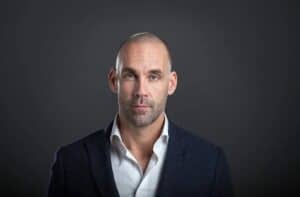Guest speaking may seem straightforward at first glance, but once you begin preparing for a speaking event, you’ll quickly realise there’s much more involved. For example, Richard van Hooijdonk begins preparing months in advance for major conferences. He works with a dedicated team to plan each aspect of his talk – from content to audience interaction – ensuring a seamless delivery. Just like any other event, thorough planning is essential – it helps you stay focused and avoids those last-minute surprises. In this blog post, we’ll walk you through the key preparations necessary to deliver a memorable and stress-free talk.
Researching your audience and venue
Starting with the overall research of your venue and the audience that has booked you. What do we know about them? And how did we deal with audiences like this before? If not, you can look deeper into the company or event you are speaking for and match your interests with them. What is the main thing you need to talk about, and does this align with your scope of work and morals?
Think about the demographics of your audience, the prior knowledge of audiences that resemble them and interests and expectations. By researching your audience, you can make a tailor-made experience and perform a more relevant and engaging presentation as a guest speaker.
Some tips to use:
- Gather information by asking the event organiser.
- Review event materials, such as flyers, promotional content and the marketing aspects.
- Attend similar events and observe how other speakers or mentors who have experienced similar audiences worked and spoke.
- Networking with peers will also give you knowledgeable insights, and you will be able to ask them for their advice.
- Use online tools, like social media, polls and surveys. These can be used to get a deeper sense of the audience you are working with, specifically.
If you have researched your audience as a guest speaker, you can adapt your presentation by including inclusive language, which makes your presentation accessible to everyone, regardless of their background or level of understanding. Highlighting the benefits can also be valuable to them, and let’s not forget incorporating audience interactions. Richard van Hooijdonk is known for customising every presentation based on the industry and audience. When speaking for a cybersecurity conference, he’ll use highly specific examples and terminology, whereas for an education audience, he shifts his tone and content to be more inspirational and future-focused.
These can be adapted to the audience. Questions and discussions can make sure that your audience will remember what you have said more specifically. By tailoring your examples and analogies, you will automatically resonate more with your audience.
Developing your presentation materials
Developing your presentation is also an important part of being a public speaker and public speaking in general. With a good and strong presentation, you will make a name for yourself and create a reputation in the public speaking business. The better the preparations, the better the presentation will be.
The first step of developing presentation materials is always planning the presentation. How much time do you have? When is it scheduled, and what are the details of the presentation event? If you can answer all these questions, the date is set. The second step we have already discussed which is analysing your audience. Based on this information, you are going to decide on the topics you are going to discuss as a guest speaker, what would they be interested in? And what is something they can still learn from me? Think easily and adapt to your audience’s interests.
Next, define the objective of the presentation. What do they want to learn, or what message do you want to deliver? It is always best to think in your audience’s interest and keep this in mind throughout the planning of the presentation materials. Once you have managed to get this, you can think about the venue itself. If this is already organised, be happy. If not, then you must make sure to check the venue beforehand. Is the venue clean, the stage safe, and all the lighting and sound systems working?
Richard van Hooijdonk often integrates multimedia into his keynotes – videos, AR, and futuristic visuals – to create an immersive experience. His slide decks are not just informative, they’re designed for impact, often created by professional designers to enhance the futuristic tone of his content. Equipment testing is also part of the venue testing as a guest speaker, but in most cases, this is done for you. If everything is set, you just must wait till they introduce you, and the stage is yours!
Practising your delivery
Once it is time for you to appear as a guest speaker, you think about your preparations. If these were good enough, you would effortlessly get your message across to your audience. An important part of preparing for a guest speaker event is also practising your delivery. Rehearsing the speech out loud is highly recommended, together with standing and simulating the actual presentation at the real venue.
With the practice of the speech, we also include eye contact, pauses, and giving yourself time to receive feedback from the audience. Let the audience think, which means pausing after a question or sentence with a controversial topic. If you know how to deliver a good speech, you know how important delivery is and the tone of your voice in certain moments. Practice these in your guest speaking speech as well.
Some say this last point might be the most important one of all, since Albert Mehrabian’s research suggests that 55% of a message is conveyed through body language, 38% through tone of voice, and only 7% through the actual words spoken. That is why body language might be the most important one of all. Have a good posture, act according to your topic and keep your hands in a natural position. If you slouch or have a nervous posture, this will reflect on the audience and will undermine your message.
Richard van Hooijdonk rehearses every talk multiple times. He practices not only his words but his movements and timing – when to pause, when to walk, when to use visuals. He even uses VR tools to simulate large crowds during rehearsals, which helps refine his stage presence.
Managing stage fright and nerves
Nerves are normal, but manageable for sure! Practising and preparations will help to overcome a huge part of stage fright and will calm the nerves eventually. Being experienced or not, everyone has this, and it is an instinct. Focusing on relaxation techniques is also recommended since they can help you overcome stage fright and make you look like a natural on stage. Relaxation techniques for guest speakers are.
- Deep breathing, slow breathing will calm your nervous system before and during the speech.
- Positive self-talk, motivating yourself and believing in yourself are important as well. You got this; they wanted you to speak at their event after all.
- Progressive muscle relaxation will give you a more relaxed look, both on stage and will make you look more confident. You don’t need to rush with your presentation, and it should reflect that as well.
Even someone as experienced as Richard van Hooijdonk admits to feeling a thrill of nerves before going on stage. He uses that energy to sharpen his focus and connect more authentically with his audience. Breathing techniques and a short mindfulness routine before stepping on stage are part of his routine.
Embracing the nervousness might be the most important one of all, you cannot expect to talk in front of a huge crowd and not get nervous, this is normal and should also be recognised as one. It just shows that you care about your presentation, and that is not a bad thing.
Share via:


